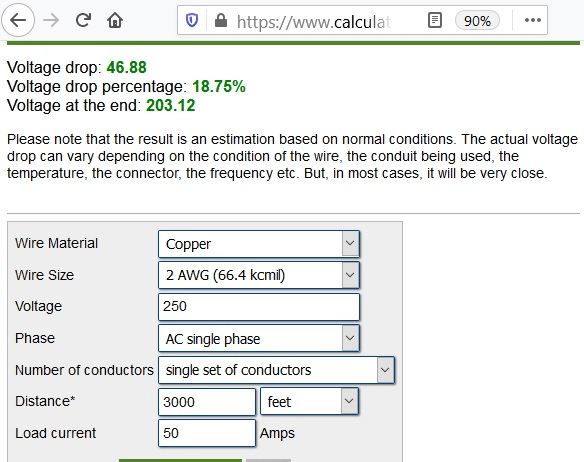REPLYING TO THREE POSTS HERE - I don't see an option
to reply to individual posts:
stevenal (Electrical) posted:
How did you get 2,400/4,160? When I zoom in to the insulators, they appear quite small. Found a street light, which appears to be wired directly. Nice phase separation for 220V. Built for typhoons maybe?
Great post!
Eleanor replying to stevenal:
I noticed the small insulators too. I moved from distribution
to computer programming in the early 1980s, so I'm out of date,
but haven't I seen some surprisingly small diameter "rod" style
insulators used on distribution primary in recent years?
As to 2,400/4160, that's just what the general appearance
suggests to my eye. It looks to me as if they wanted to have
the ability to go to somewhere in the 2,400/4,160 range if the
demand were to grow.
I think what helps a lot is the absence of 120 volt appliances.
That could theoretically quadruple the reach. However, that
article about the existing system still makes it sound as if
there are lots of hefty appliances.
Probably, given there is no electric heating or air conditioning
mentioned, there's enough diversity to make the 230 volt system
workable.
Might a system like that benefit from a few capacitors?
I would imagine their general store is a goodly load, with the
fridges/freezers, but it's well placed, just a few doors uphill
from the generators.
Unfortunately, the street view footage does not reach down to
the powerhouse itself.
cranky108 (Electrical) posted:
1 Feb 21 20:29
Interesting place. Where else might a power engineer want to retire?
Great post!
Eleanor replying to cranky108:
Hey man (or girl, maybe) - if you go through the
articles and videos about the place, they DO WANT
people to immigrate there! All skills welcome.
One source mentioned that the fellow who put up
the lines and operates the generators was age 67
(but I didn't see a date on that item.)
The way the place operates is residents don't have
full time jobs, but instead each wear a number of
part-time "hats."
They have incomes, and are officially a colony of
the United Kingdom. Senior officials, like judges
and senior law enforcement, medical, politial (e.g.
governor) reside in Auckland, New Zealand.
There are professionals who travel and aren't
permanent residents. I think there is a rotating
doctor at their clinic, and a nurse's aide as well.
Governments kind of like their island possessions
and from what I've seen looking around the web, there
are serious efforts underway to upgrade facilities
and services, and encourage immigration.
At the moment, they are seeking a school teacher for
all levels up to high school. High school kids go
to boarding school in New Zealand - that seems like
a sensible move. The school enrollment is currently
just 3 kids, all different ages.
Oh, and hey, one source reported no snakes on the
island, which I would find a plus. They do have
lizards, but they can be kind of cute and help keep
insects under control.
Mbrooke (Electrical) posted:
3 Feb 21 09:07
Any single lines diagrams? Or pictures? So the customers lose power when generators are changed over? I'm fascinated!
Thank you Eleanor!
Eleanor replying to Mbrooke:
I haven't found any single line diagrams, but plenty
of glimpses of the overhead lines can be had by going
into google maps, calling up Pitcairn Island (be sure
you've got the inhabited island, and not one of the
surrounding atolls.)
Zoom in fairly close, then use the little STREET
VIEW stick figure icon and drop it on one of the
streets of interest. Fascinating.
They have a 25-ton mobile crane for offloading heavy
stuff at their rather small wharf - interesting.
This 32-min. video by a dentist who visited the island
is a rather good rundown on what it takes to get there,
first 11 minutes, and then what he found there:
And here is the government of Pitcairn's web site:
(connects with the Auckland,
New Zealand seat of government)
* I have written to one of the staff at the government
web site and asked if I could be put in touch with the
fellow who runs and maintains the power system. She
said she would try to arrange that.
I don't know if they have satellite access to the Internet
or not, at this point.
If I find something interesting, I'll post that here.
** I have another thing I've been wondering about along
the same line. There is that fascinating rotating
restaurant and tourist inn way way up in the Swiss Alps,
which appeared in a James Bond movie:
I'd love to know how they handle electric power, water
and sewage at that very high place. Anyone know?
Eleanor White

